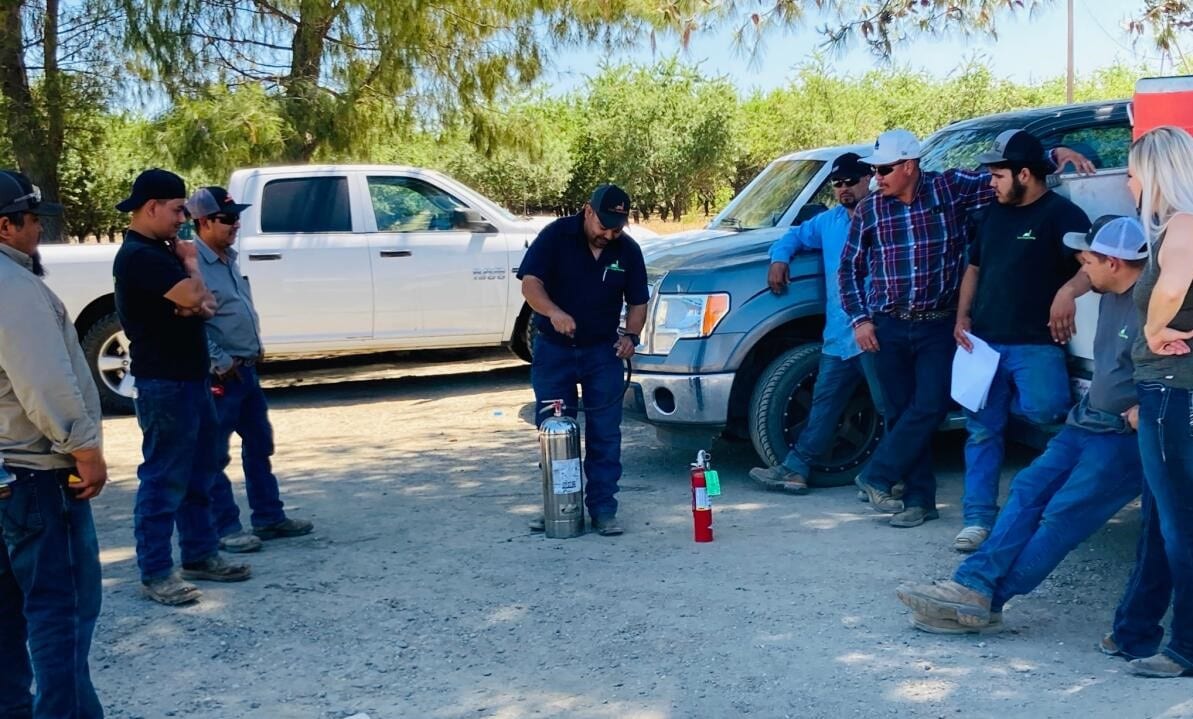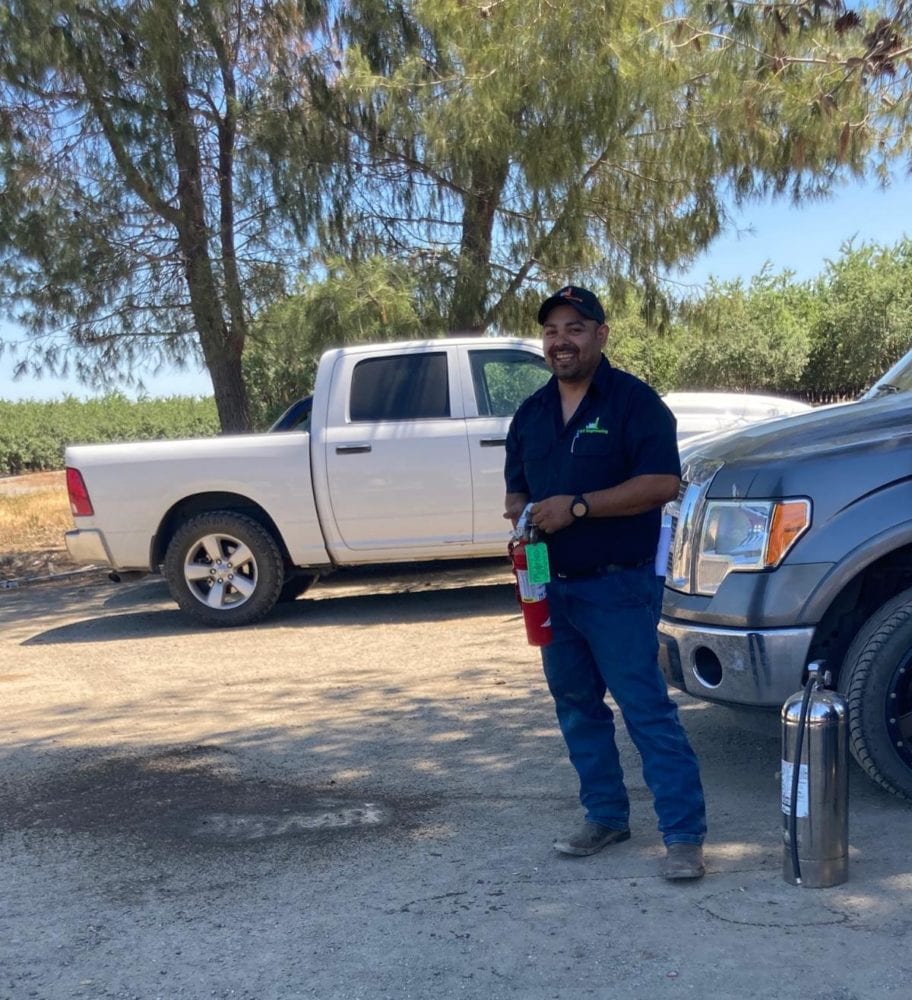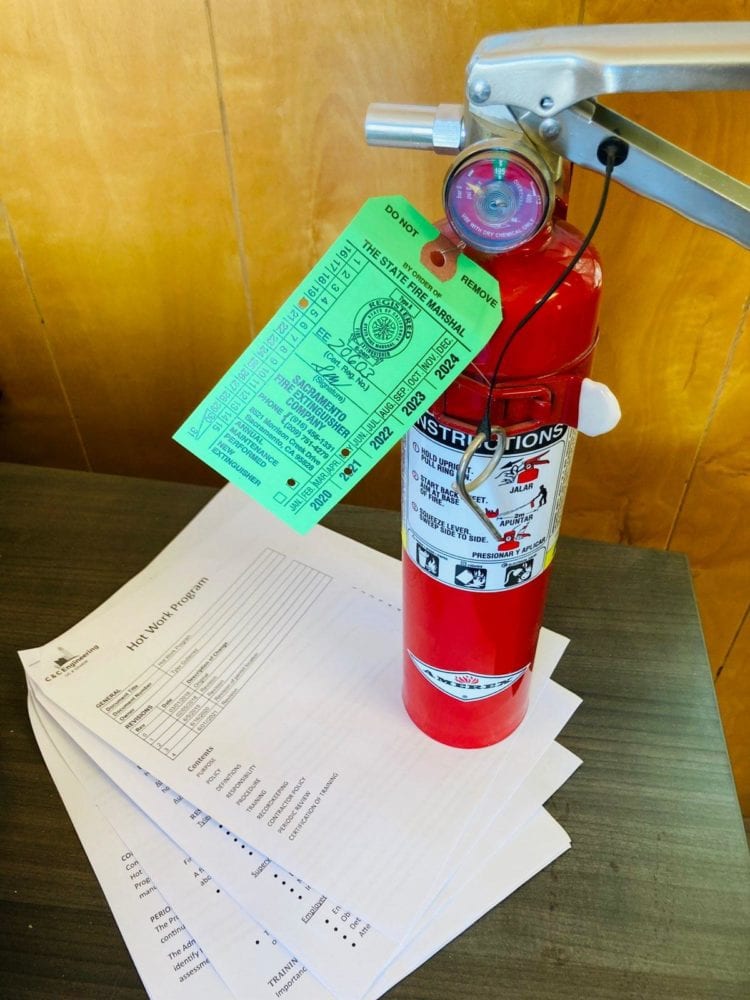1. Improve workplace fire safety and protection procedures.
- Train employees in fire safety by keeping policies and procedures up to date, relevant and thorough.
- Employees should be aware of corect gas cylinder storage and separation. Ie. oxygen cylinders should be separated from fuel gas cylinders a minimum of 20 feet away or by a non combustible barrier at least 5 feet high having a fire resistance rating of at least one half hour.
- Store cylinders far enough away when being used so that sparks, hot slag, or flames can not reach them.
- Employees should be aware of correct gas usage; shutting off when finished and placing them back in storage.
- Make fire safety equipment accessible on site so workers can mitigate risks effectively.
2. Prepare and monitor the hot work site and isolate equipment.
- Cover the area by removing all combustible/flammable material to a perimeter of at least 35’ from the hot work site. Non combustible covers or tarps can be used for all other remaining material.
- Cover all appropriate floor and wall openings and close fire doors at openings within the 35’ radius.
- Isolate or barricade hazardous areas around work sites using caution tape or other approved barriers to eliminate unauthorized personnel from entering the area.
- Power down equipment, lock out tag out when required.
- Rid area of any flammable or combustible lint, dust, vapors, and liquids, or unpurged tanks or equipment previously containing such materials.
3. Use proper flame resistant protective wear, garments, and equipment.
- Conduct training on the proper handling and use of fire protection equipment.
- Make sure equipment has been properly inspected, has a tag showing certification within one year of the hot work activity and personnel has been taught proper ways of handling before use.
- All permits needed for the job should be known, understood and obtained by the employee performing hotworks activity.
- Conduct training on proper protective wear for employees performing hot works and make them readily accessible for field and shop crews.
Last but not least it can be very helpful to keep record of program procedures training and program review to ensure all employees understand and are able to perform hot works with a breeze!
OSHA does not have an “exact set standard for procedures, as they can vary depending on company size and industry.”
Not all contents are included in this post C & C Engineering has many more included in our LOTO Training these are only a few displayed specifically for the entertainment and pleasure of blog readers.
C & C Engineering does not sell safety training and is by no means soliciting professional training or safety advice.



